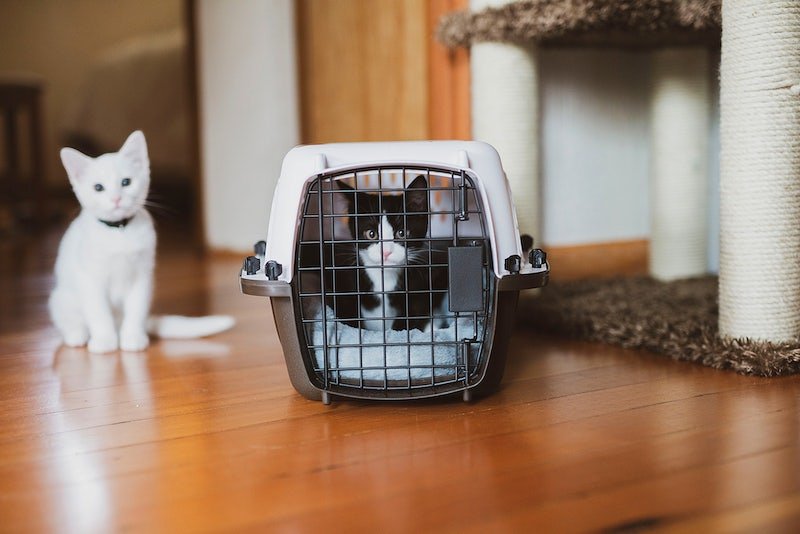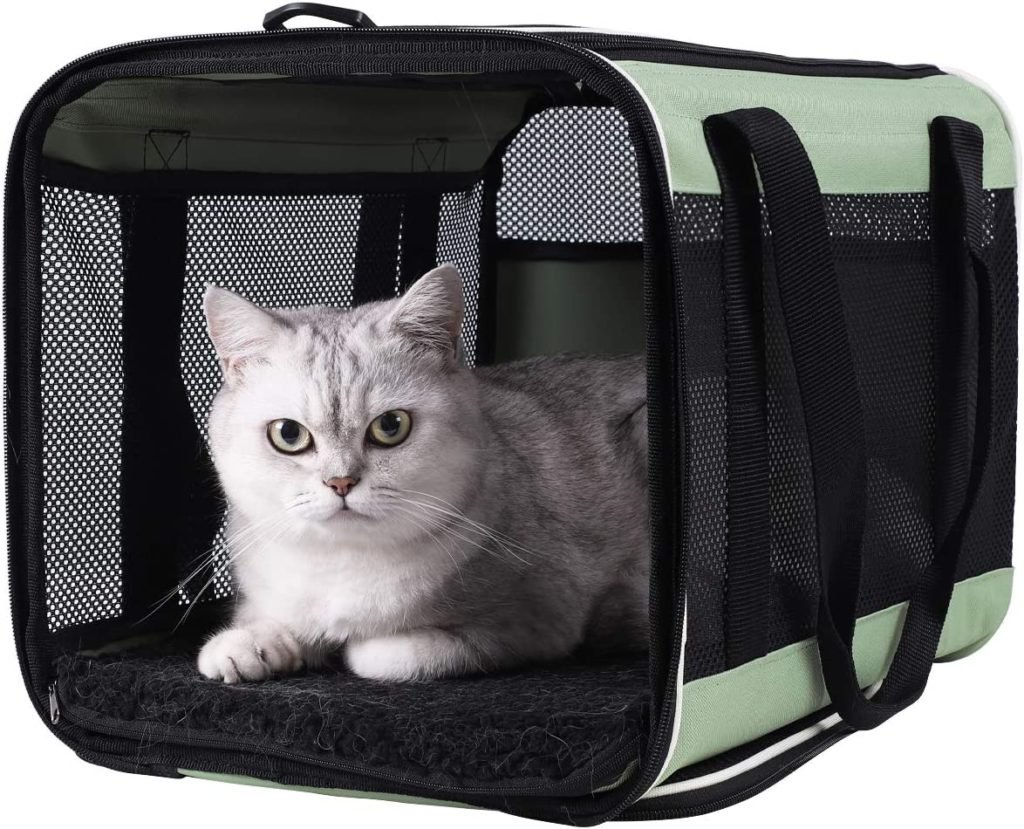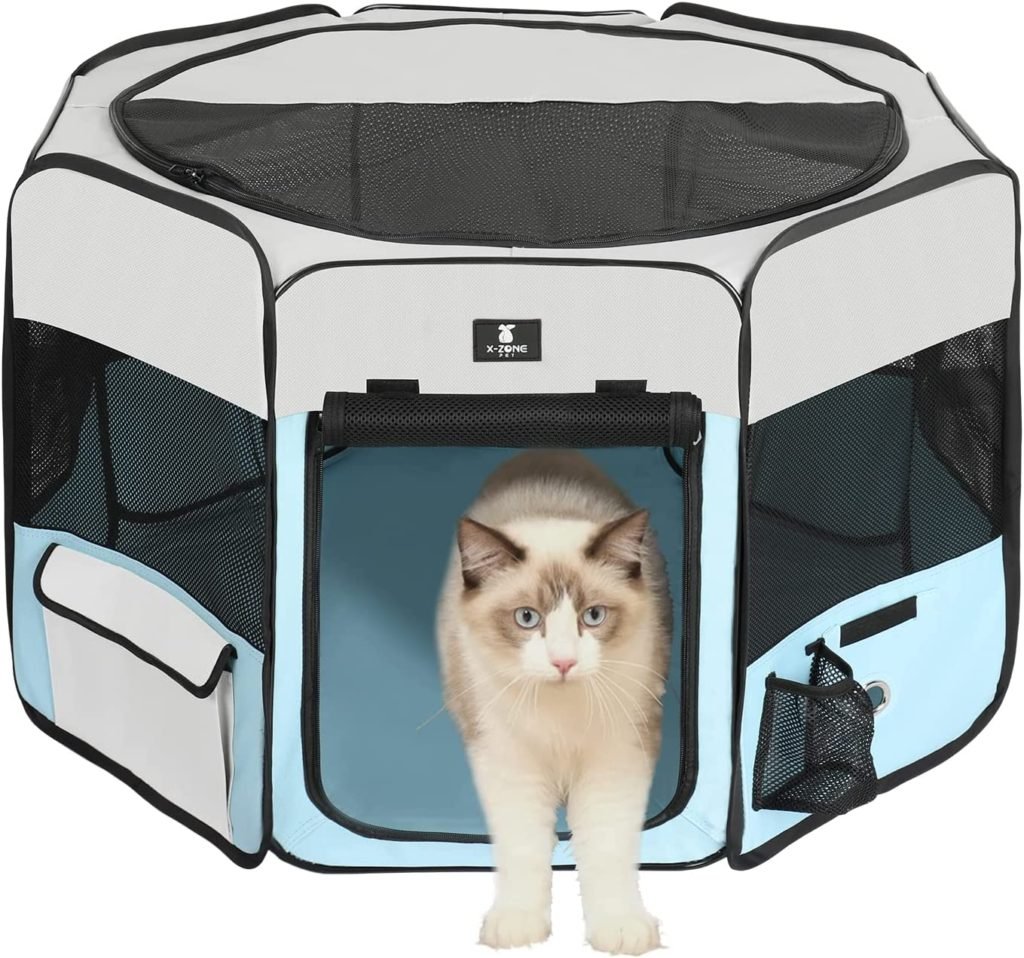Get ready to revolutionize the way you approach cage training a cat. Our expert guide reveals all the secrets of a well-trained kitty.
Cage training a cat can be helpful if done correctly and with patience. This training can protect your cat in crises, medical procedures, and other situations. This tutorial covers everything from choosing a crate to creating a routine your cat will love. This method uses a little click device to tell the animal it did the right thing. Your cat will quickly learn to associate the click with a reward, such as a treat or praise. Cat clicker training tips:
Choosing the Right Cage for Your Cat
Before you begin cage training, selecting the appropriate crate that suits your cat’s needs is crucial. Here’s what to consider when choosing the perfect cage for your feline friend:
Cage size and materials
Your cat will feel cramped and uncomfortable in a too-small crate, but a too-large one may not be cozy enough.
As a rule of thumb, the crate should be large enough for your cat to stand up, turn around, and stretch out comfortably.
Regarding materials, several options are available, including plastic, wire, and soft-sided crates. Plastic crates are easy to clean, provide good ventilation, and offer a sense of security due to their enclosed design. Wire cages provide excellent visibility and airflow, but you may need to add a cover to cage a more secure feeling for your cat. Soft-sided crates are lightweight and portable but may be less durable and safe than plastic or wire options.
Comfort and safety considerations
Add soft bedding or a blanket to the bottom to make the cage comfortable and inviting for your cat. You can also include a favorite toy or an item of your clothing to provide a familiar scent. Ensure no sharp edges, protruding wires, or other hazards that could injure your cat while inside the cage.
When placing the crate in your home, choose a quiet, low-traffic area where your cat won’t be disturbed by excessive noise or activity. Keep the cage out of bright sunlight and draughts to comfort your pet.
You May Also Interest: Stop the Scratch: Mastering How to Train Your Cat Not to Scratch
Preparing Your Cat for CageTraining
Before starting crate training, gradually introduce your cat to the cage and make it a pleasurable experience.
Gradual introduction to the crate
Avoid forcing your cat into the crate immediately. Instead, allow them to explore it at their own pace. Place the cage in a room where your cat spends a lot of time, and leave the door open so they can enter and exit as they please. That will help them become familiar with the crate and view it as a non-threatening part of their environment.
Creating a positive association with the cage
Encourage your cat to see the crate as a pleasant and safe space by placing treats, toys, or their food bowl inside. That will help cage a positive association with the crate, making them more likely to enter and spend time in it willingly.
Cage Training Techniques and Tips
Once your cat is comfortable with the cage’s presence, it’s time to start training. Here are some techniques and tips to help you succeed in crate training your cat:
Reinforcing positive behavior
When your cat chooses to enter the crate independently, reinforce this positive behavior with praise and treats. That will help them understand that going into the cage is a desirable action that leads to rewards.
Using treats and praise
Treats can be a powerful motivator during the cage training process. When your cat enters the crate voluntarily, offer them a treat and verbal praise to reinforce the positive behavior. As they become more comfortable with the cage, gradually increase their time inside before giving them a treat.
Establishing a routine
Consistency is vital when it comes to crate training. Establish a routine by setting specific times during the day for your cat to spend in the crate. That could be during meals when you’re away from home or as part of a bedtime routine. By creating a consistent schedule, your cat will become more comfortable in the cage and may even begin to seek it out as a safe, familiar space.
Remember, patience is crucial during the cage training process. You can teach your cat to enjoy the cage with patience and a good attitude.
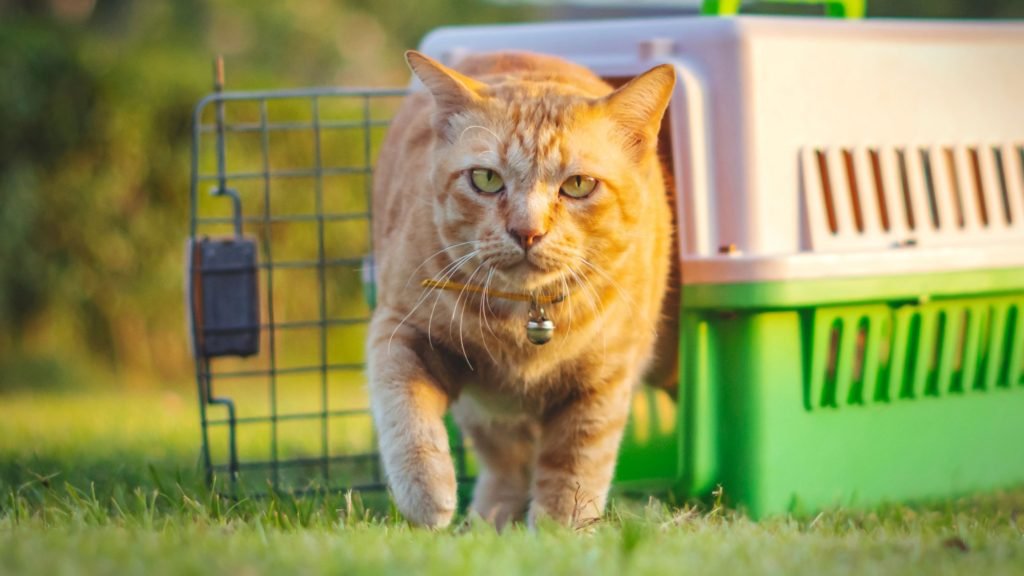
You May Also Interest: Becoming a Cat Groomer: Unlock a Rewarding Career
Addressing Common Cage Training Concerns
Cage training can come with challenges, but knowing how to address common concerns can make the process smoother for you and your cat.
Resistance to the Cage
Some cats may resist cage training, especially if they have never been exposed to a crate. To overcome this resistance, reinforce positive associations with the cage by placing treats, toys, and comfortable bedding inside. You can also try feeding your cat in the cage to help them associate it with positive experiences.
Cage training at night
Cage training your cat at night can help establish a bedtime routine and provide them with a secure space to sleep. To do this, cage a calm and quiet environment by turning off distractions like televisions or bright lights. Encourage your cat to enter the cage by placing treats or toys inside and offer praise when they do so.
Dealing with vocalizations and anxiety
Suppose your cat becomes vocal or anxious while in the cage. It’s important not to reinforce this behavior by letting them out. Instead, wait for them to calm down before releasing them or offering treats. Over time, they will learn that being quiet and calm in the cage leads to rewards.
Cage Training for Different Purposes
Cage training can serve various purposes, from traveling to managing medical conditions and providing a safe space during emergencies.
Traveling with your cat
A cage-trained cat will be much easier to travel with, whether it’s a short trip to the vet or a long journey. A comfortable, familiar crate will help reduce your cat’s stress and anxiety during travel, making the experience more pleasant for both of you.
Managing medical conditions
Cage training can be particularly beneficial for cats with medical conditions that require confinement or restricted movement during recovery. A well-trained cat will be more comfortable and less stressed in a crate during these times, promoting a quicker and healthier recovery.
Creating a safe space during emergencies
In an emergency, such as a natural disaster or a fire, a cage can serve as a secure and familiar space for your cat. Crate training ensures that your cat will be more likely to willingly enter the crate when needed, making evacuation and transport more accessible and less stressful for you and your pet.
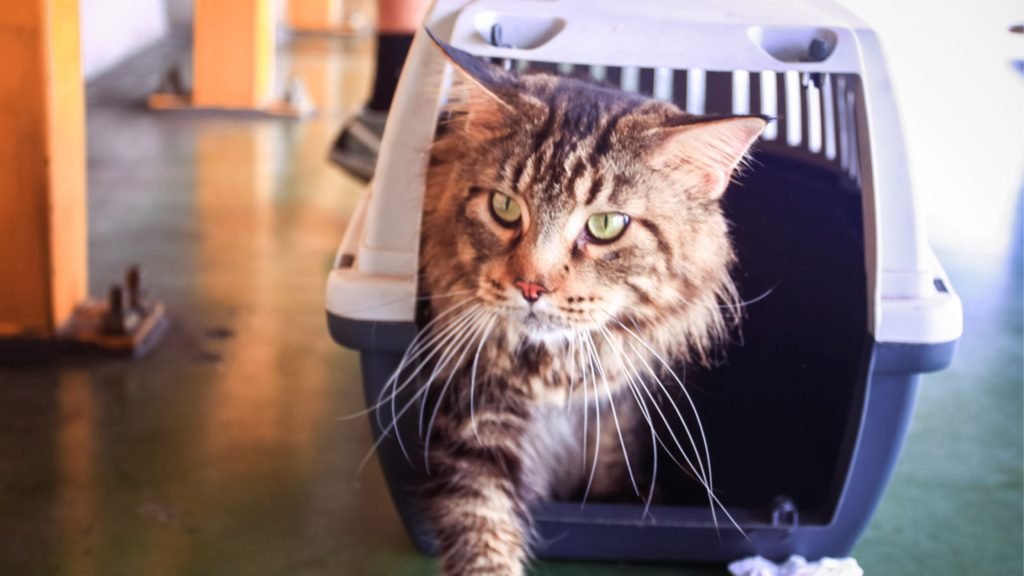
You May Also Interest: Can Weather Affect Cats Behavior? Discover The Truth
Frequently Asked Questions
Can you cage-train a cat?
Yes, you can cage-train a cat. Cage training can benefit you and your cat by providing a secure and familiar space for various situations, such as travel, medical recovery, or emergencies. Most cats can learn to accept and enjoy their cage with patience, persistence, and positive reinforcement.
Do cats like Cages?
Cats may react differently to cages, but with proper training and positive associations, many cats see their crate as a safe and comfortable space. Ensuring the crate is the right size, has comfortable bedding, and is placed in a quiet area of your home will help your cat feel more at ease.
Cage training a kitten at night
Cage training a kitten at night can help establish a bedtime routine and provide them with a secure place to sleep. Gradually introduce the cage by placing treats, toys, and comfortable bedding inside. Encourage your kitten to enter the cage and offer praise when they do so. Be patient and consistent; soon, your kitten will feel comfortable sleeping in their cage at night.
Conclusion
Crate training a cat requires patience, persistence, and a consistent approach. By choosing the right crate, creating positive associations, and addressing common concerns, you can help your cat become comfortable and confident in their crate. Whether for traveling, managing medical conditions, or providing a safe space during emergencies, crate training can be valuable for you and your pet. With dedication and time, you can experience the benefits of having a crate-trained cat and enjoy a stronger bond with your feline friend.

